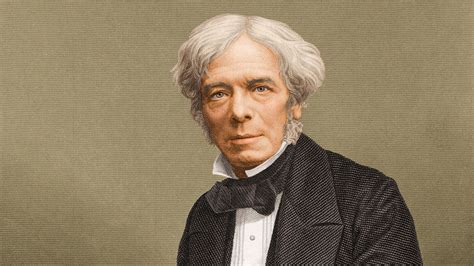Electrochemistry faraday's law

Michael Faraday reported that the mass (m) of elements deposited at an electrode is directly proportional to the charge (Q; SI units are ampere seconds or coulombs). Here, the constant of proportionality, Z, is called the electro-chemical equivalent (ECE) of the substance. Thus, the ECE can be defined as … See more Faraday's laws of electrolysis are quantitative relationships based on the electrochemical research published by Michael Faraday in 1833. See more Faraday discovered that when the same amount of electric current is passed through different electrolytes/elements connected in series, the mass of the substance liberated/deposited at the electrodes is directly proportional to their chemical equivalent/ See more • Electrolysis • Faraday's law of induction • Tafel equation See more A monovalent ion requires 1 electron for discharge, a divalent ion requires 2 electrons for discharge and so on. Thus, if x electrons flow, $${\displaystyle {\tfrac {x}{v}}}$$ atoms … See more • Serway, Moses, and Moyer, Modern Physics, third edition (2005), principles of physics. • Experiment with Faraday's laws See more WebFeb 24, 2012 · Faraday’s First Law of Electrolysis. From the brief explanation above, it is clear that the flow of current through the external battery circuit fully depends upon how …
Electrochemistry faraday's law
Did you know?
WebSep 22, 2024 · Faraday, who became one of the greatest scientists of the 19th century, began his career as a chemist. He wrote a manual of practical chemistry that reveals his mastery of the technical aspects of his art, discovered a number of new organic compounds, among them benzene, and was the first to liquefy a “permanent” gas (i.e., one that was … WebApr 8, 2024 · Faraday's second law is applied to problems where the mass liberated (or deposited) of one substance is known and we want to figure out how much of another …
WebFaraday's Law of Electrolysis - The Simple Idea Which Faraday Discovered Makes Chemistry & Electrochemistry So Much Easier! You've probably learned that elements … WebFaraday’s Law 3 The Faraday establishes the equivalence of electric charge and chemical change in oxidation/reduction reactions. For example consider the reduction of nickel at …
WebApplication of Faraday's Laws-2. Two cells containing \ce {Ni (NO3)2} Ni(NOX 3)X 2 and \ce {AgNO3} AgNOX 3 electrolytic solutions respectively, are connected in series. A steady … WebIn electrochemistry, Faraday efficiency (also called faradaic efficiency, faradaic yield, coulombic efficiency or current efficiency) describes the efficiency with which charge is transferred in a system facilitating an electrochemical reaction.The word "Faraday" in this term has two interrelated aspects: first, the historic unit for charge is the faraday (F), but …
http://hooperslab.weebly.com/uploads/2/9/3/2/29323923/pogil_electrochem_answers.pdf
In physical chemistry, the Faraday constant, denoted by the symbol F and sometimes stylized as ℱ, is the electric charge per mole of elementary charges. It is named after the English scientist Michael Faraday. Since the 2024 redefinition of SI base units, which took effect on 20 May 2024, the Faraday constant has the exactly defined value given by the product of the elementary charge e and Avogadro … nws sneads ferryWebFaraday’s laws of electrolysis, in chemistry, two quantitative laws used to express magnitudes of electrolytic effects, first described by the English scientist Michael Faraday in 1833. The laws state that (1) the amount of chemical change produced by current at an electrode-electrolyte boundary is proportional to the quantity of electricity used and (2) … nws skywarn recognition dayWebJun 13, 2024 · 17.9: Electrochemistry and Conductivity. From the considerations we have discussed, it is evident that any electrolytic cell involves a flow of electrons in an external circuit and a flow of ions within the materials comprising the cell. The function of the current collectors is to transfer electrons back and forth between the external circuit ... nws skywarn spotter trainingWebFeb 10, 2024 · F = N A *e. Where: F = Faraday’s constant. N A = Avogadro’s constant (approximately 6.022 x 10 23 electrons per mole) e = the charge of a single electron (approximately 1.602 x 10 -19 Coulombs) So, we define the Faraday constant as the charge of one mole of electrons, which is equal to Avogadro’s number ( N A) of electrons. nws silverton orWebBy 1839 Faraday was able to bring forth a new and general theory of electrical action. Electricity, whatever it was, caused tensions to be created in matter. When these … nws silver city nmWebNov 1, 1991 · Abstract. In connection with the birth bicentenary of Michael Faraday (1791-1867), an appreciation of bis life and career, his laws of electrolysis and their applications … nwss mmwrWebAug 15, 2024 · Faraday's Law. In every electrochemical process, whether spontaneous or not, a certain amount of electric charge is transferred during the oxidation and reduction. … nws snowfall reports